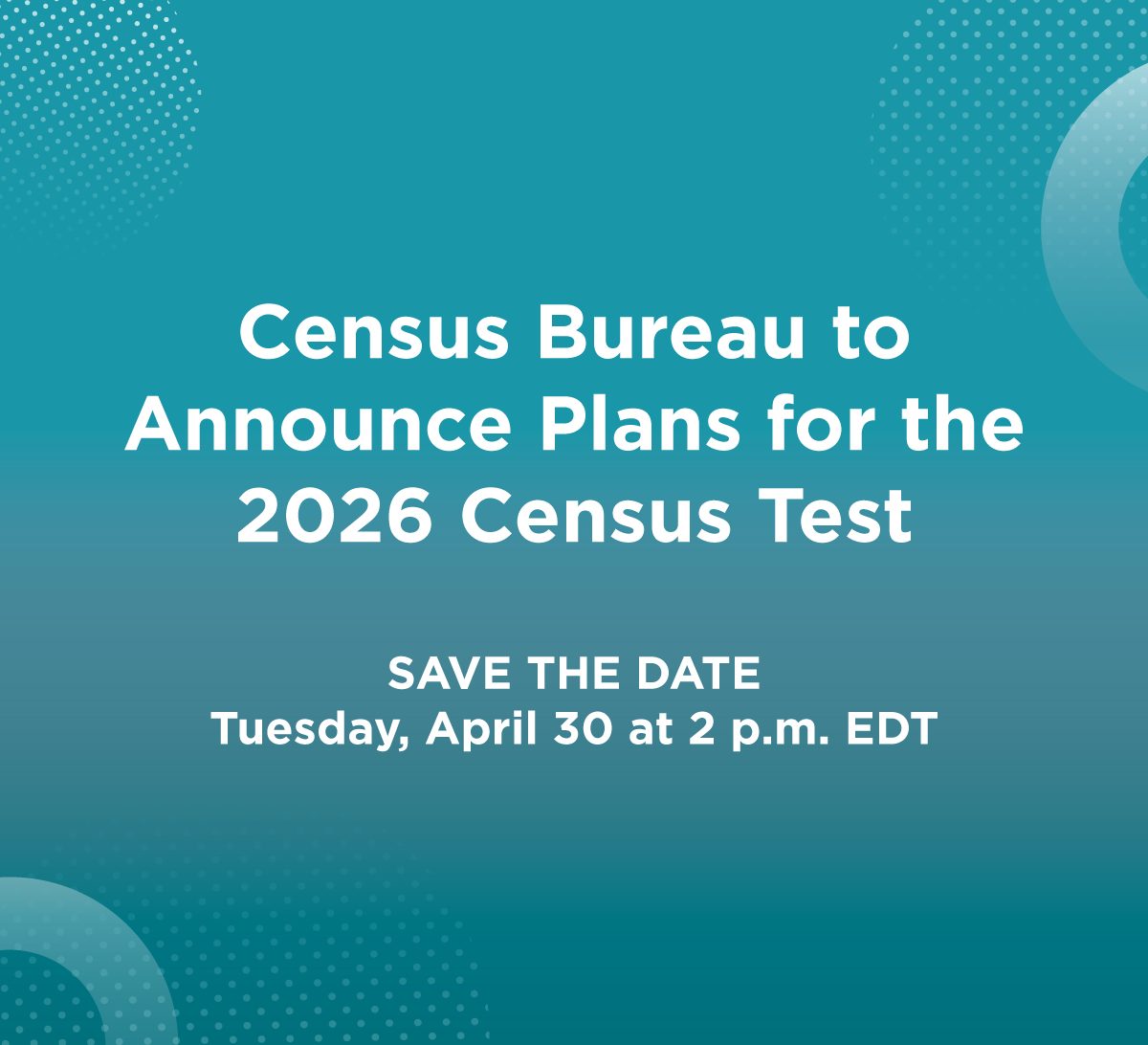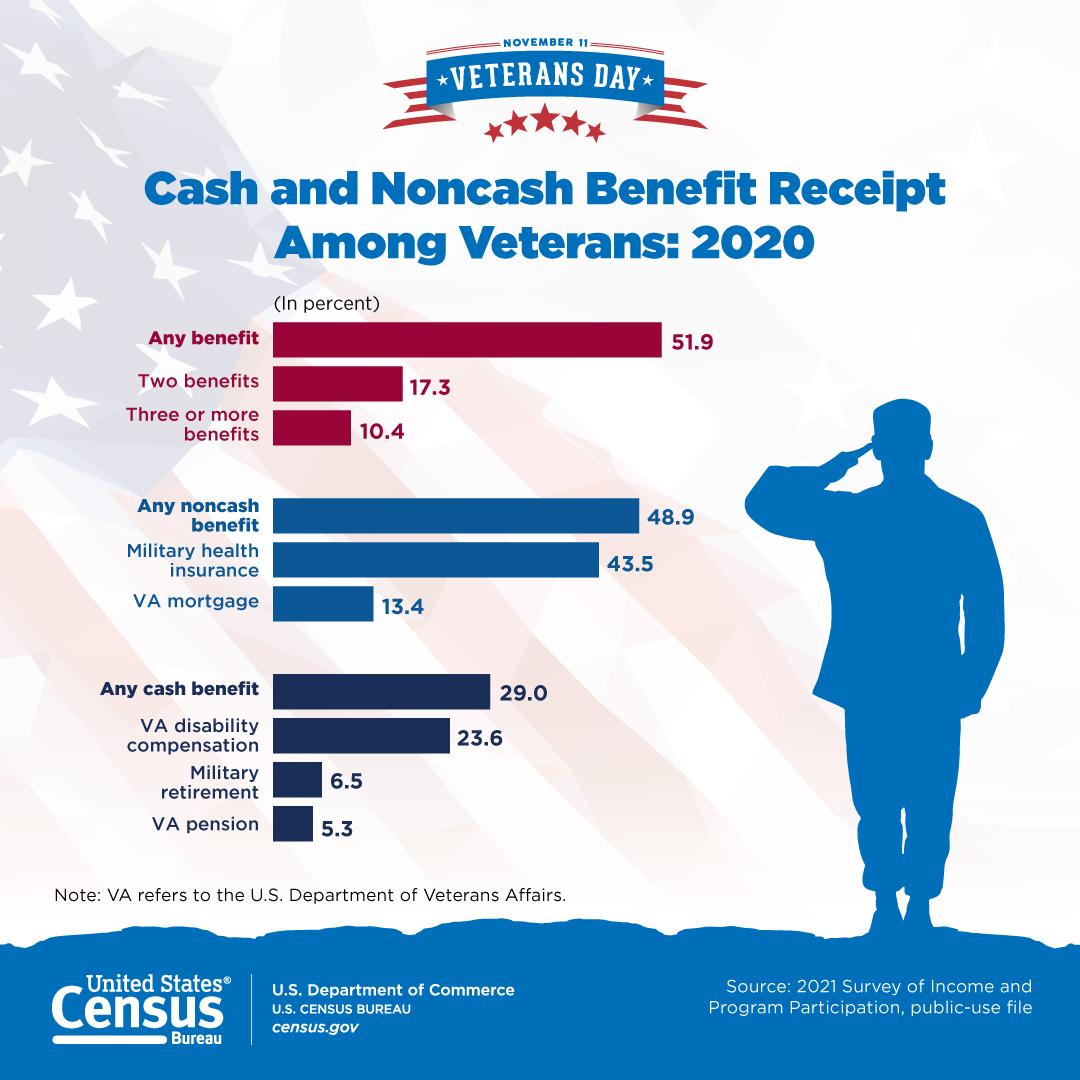Veterans Day 2022: November 11
Veterans Day originated as “Armistice Day” on Nov. 11, 1919, the first anniversary of the end of World War I. Congress passed a resolution in 1926 making it an annual observance, and it became a national holiday in 1938. Sixteen years later, then-President Dwight D. Eisenhower signed legislation changing the name to Veterans Day to honor all those who served their country during war or peacetime. On this day, the nation honors military veterans -- living and dead -- with parades and other observances across the country and a ceremony at the Tomb of the Unknown Soldier at Arlington National Cemetery in Virginia.
The following facts are possible thanks to the invaluable responses to U.S. Census Bureau surveys. We appreciate the public’s cooperation in helping us measure America’s people, places and economy.
Veteran Population
Did You Know?
16.5 million
The number of military veterans in the United States in 2021.
Source:
1.7 million
The number of female veterans in the United States in 2021.
Source:
1.9%
The percentage of veterans in 2021 who were Asian American. Additionally, 73.0% of veterans were non-Hispanic White; 8.2% Hispanic or Latino (of any race); 12.3% African American; 0.7% American Indian or Alaska Native; 0.2% Native Hawaiian or Other Pacific Islander; and 2.7% were Some Other Race. (The numbers include only those reporting a single race.)
Source:
24.4%
The percentage of veterans ages 75 and older in 2021. At the other end of the age spectrum, 8.2% of veterans were younger than age 35.
Source:
More on Veterans
Here’s a detailed profile of the veteran population in 2021, including:
- When veterans served.
- Demographics – age, sex, race/Hispanic or Latino origin.
- Median income.
- Educational attainment.
- Employment status.
- Poverty status.
- Disability status.
Source:
Related News Products
Past Facts for Features
Stats for Stories
- Patriot Day and National Day of Service and Remembrance: Sept. 11, 2022
- National Korean War Veterans Armistice Day: July 27, 2022
- Memorial Day: May 30, 2022
- Armed Forces Day: May 21, 2022
Reports
- Benefits Received by Veterans and Their Survivors
- The Employment, Earnings, and Occupations of Post-9/11 Veterans
- Those Who Served: America’s Veterans From World War II to the War on Terror
Graphics
- Rise in Female Veterans
- Veteran Population Declines
- U.S. Armed Forces at Home and Abroad
- 2019 Veterans Day
- A Century of Serving
- Percentage of Veterans Among the Adult Population
- Veteran-Owned Businesses in the U.S.
- Life After the Military
- Veterans Statistics by State (2015)
America Counts
Statistics in Schools
Blogs
Related Info
The following is a list of observances typically covered by the Census Bureau’s Facts for Features series:
Black (African American) History Month (February)
Women's History Month (March)
Irish-American Heritage Month (March)
Asian/Pacific American Heritage Month (May)
The Fourth of July (July 4)
Anniversary of Americans With Disabilities Act (July 26)
Hispanic Heritage Month (Sept. 15-Oct. 15)
Halloween (Oct. 31)
American Indian/Alaska Native Heritage Month (November)
Veterans Day (Nov. 11)
Thanksgiving Day/Holiday Season (November-December)
Editor’s note: The preceding data were collected from a variety of sources and may be subject to sampling variability and other sources of error. Facts for Features are customarily released about two months before an observance in order to accommodate magazine production timelines. Questions or comments should be directed to the Census Bureau’s Public Information Office: telephone: 301-763-3030; or e-mail: pio@census.gov.
Profile America's Facts for Features provides statistics related to observances and holidays not covered by Stats for Stories. For observances not listed below, visit our Stats for Stories web page.
Profile America's Stats for Stories provides links to timely story ideas highlighting the Census Bureau's newsworthy statistics that relate to current events, observances, holidays, and anniversaries. The story ideas are intended to assist the media in story mining and producing content for their respective audiences.








